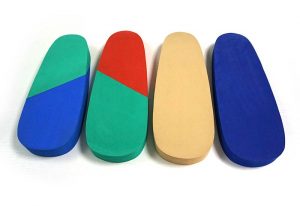
Engraving EVA foam can be a creative way to add intricate designs or details to your projects. While traditional engraving methods like using laser cutters or CNC machines may not be suitable for EVA foam due to its composition, there are alternative techniques you can use. Here’s a step-by-step guide on how to engrave EVA foam:
1. Gather your materials
You’ll need EVA foam sheets, a design template or stencil, a heat source (such as a heat gun or wood-burning tool), and basic safety equipment like gloves and eye protection.
2. Prepare your design
Create or obtain a design template that you want to engrave onto the EVA foam. You can draw your design directly on the foam or print it out and trace it onto the surface.
3. Secure the foam
Place the EVA foam sheet on a sturdy work surface and secure it in place to prevent it from sliding or moving during the engraving process. You can use clamps or heavy objects to hold it down.
4. Heat the engraving tool
If you’re using a heat gun, set it to a low temperature. If you have a wood-burning tool with temperature control, select an appropriate setting. Allow the tool to heat up according to the manufacturer’s instructions.
5. Engrave the foam
Hold the heated tool like a pen or pencil and carefully trace along the lines of your design. Apply gentle pressure to create the desired depth of engraving. Take your time and work slowly to maintain control over the tool and avoid damaging the foam.
6. Experiment with different techniques
Depending on the type of heat tool you’re using, you can experiment with various techniques to achieve different effects. For example, you can vary the speed and pressure of your strokes to create shading or texture.
7. Practice and refine
Engraving EVA foam can take practice to master. Start with simple designs and gradually work your way up to more complex patterns. Take your time to refine your technique and experiment with different tools and heat settings to achieve the desired results.
Remember to always prioritize safety when working with heated tools. Wear appropriate protective gear, work in a well-ventilated area, and follow the manufacturer’s instructions for the specific tool you’re using.
If you need an EVA foam block, click here.
